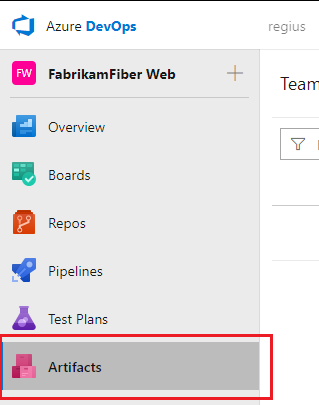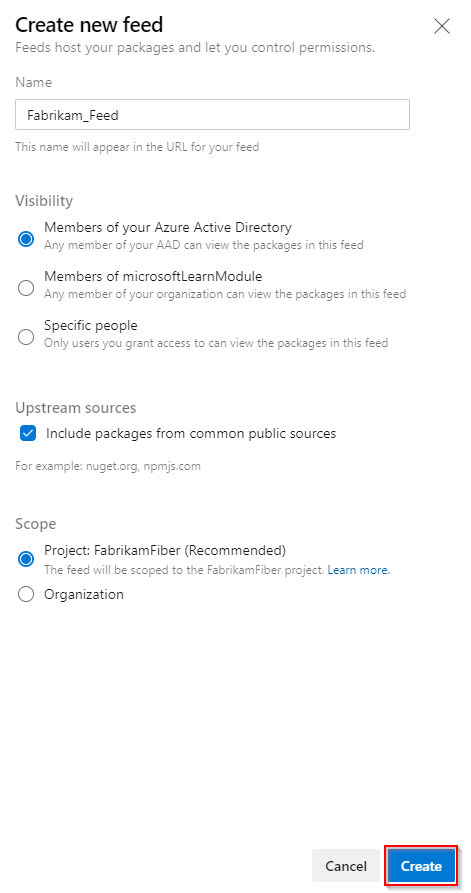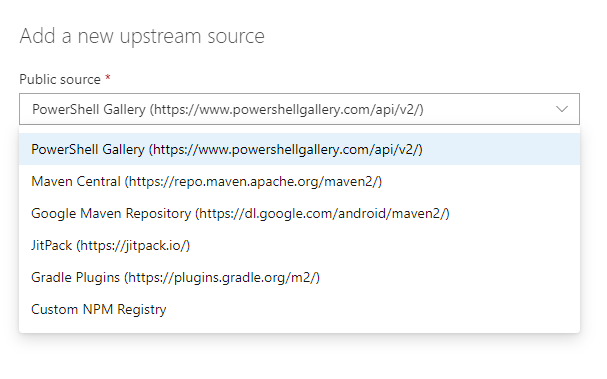Previously, Azure Artifacts customers were only able to natively consume packages from Maven Central as an upstream source, which has been a blocker for customers who want to fully leverage our services as they depend on other vital repos for DevOps.
As part of our ongoing commitment to improve Azure Artifacts, today we are excited to announce that Azure Artifacts now natively supports Google Maven Repository, Gradle Plugins, and Jitpack as upstream sources. Azure Artifacts also added native support upstreaming to PowerShell Gallery.
To enable any of these Maven repositories or PowerShell Gallery as an upstream source, either create a new feed and enable upstream sources, or edit an existing feed to add the upstream sources feature.
On a new feed
- From within your project, navigate to Azure Artifacts
- Select Create Feed.
- Give your feed a Name and choose its visibility, upstream sources, and scope settings
- Select Create when you are done.
On an existing feed
-
Select the gear icon in the top right of the page to access your feed’s settings.
-
Select Upstream sources.
-
Select Add upstream.
-
Select Public source, and then select any repository from the dropdown menu
You can also see the packages saved on your feed by selecting any of the new repositories in your feed Source Filter. To learn more read Get started with Maven feeds and Artifacts and Use Azure Artifacts as a private PowerShell repository
Other Resources
We want to hear your feedback!
As always, we want our Artifact Services to meet the evolving needs of our community. Post a comment or use the Developer community to provide feedback.





0 comments